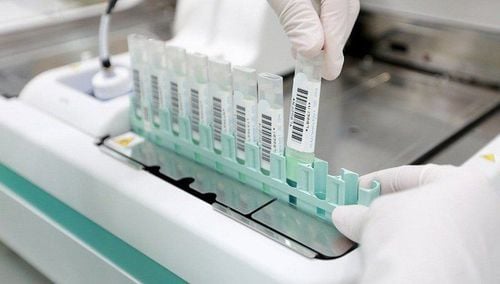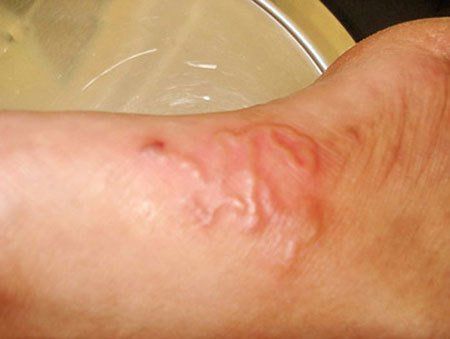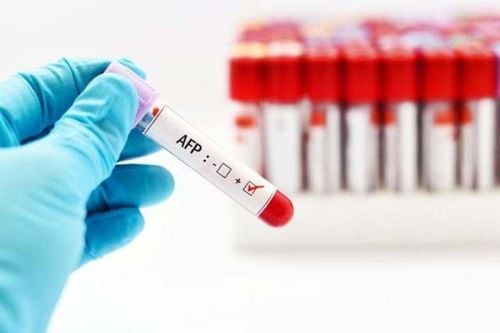This is an automatically translated article.
In Vietnam, the prevalence of strongyloidiasis is quite high, accounting for 1-2% of the total population. When infected, strongyloidiasis lingers for a long time in the body and can cause many dangerous, even life-threatening complications. The early detection and diagnosis of strongyloides infection through the Strongyloides test will help in timely treatment and minimize possible complications.
1. Overview of strongyloidiasis
Strongyloides stercoralis (Strongyloides stercoralis) is caused by worm larvae entering the body and causing disease. Among gastrointestinal parasites, strongyloides are classified as the most dangerous parasites.
After entering the body through the skin, strongyloidiasis larvae will follow the veins running up the heart, through the lungs and continue up the trachea and pharynx. These strongyloidiasis larvae then drift down the esophagus and intestines to parasitize and evolve into adult worms. It can persist for a long time in the human body and cause a lot of dangerous complications, even death.
In Vietnam, the prevalence of strongyloidiasis is quite high, accounting for 1-2% of the total population. Besides, strongyloidiasis also has a higher rate of reinfection than other diseases.
2. Causes of strongyloidiasis
Humans are infected with strongyloides stercoralis (Strongyloides stercoralis) mainly through the skin, in rare cases by eating food contaminated with larvae. After penetrating through the skin, strongyloidiasis larvae migrate through the organs and initiate intestinal parasites. There, strongyloidiasis larvae undergo two molts into adult and parasitic female worms, which then invade the cells of the intestinal mucosa. Strongyloidiasis larvae can cause disease in humans by one of the following three methods:
Strongyloidiasis larvae parasitize the mucosa of the upper small intestine and cause infection; Strongyloidiasis larvae parasitize the lining of the colon and cause infection; Strongyloidiasis larvae infect the skin around the anus and cause an infection. Then, through the lymph nodes, they spread throughout the body and cause disease in humans, typically the central nervous system, liver and lungs.
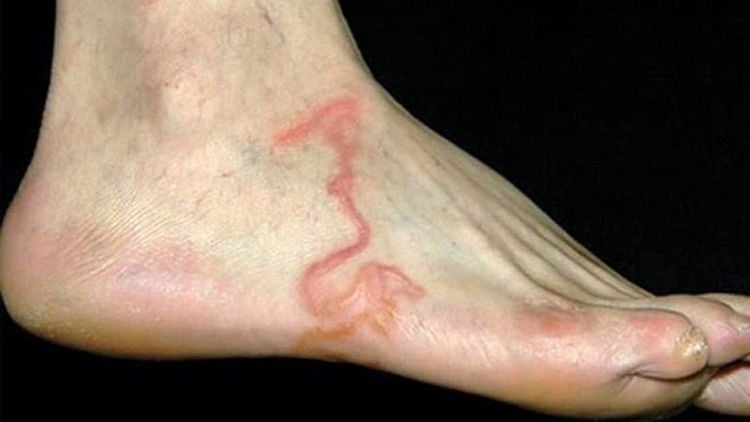
Con người có thể nhiễm giun lươn thông qua đường ăn uống
3. Symptoms of strongyloidiasis
Usually, strongyloidiasis will not be accompanied by symptoms. If present, the following symptoms are most common:
Systemic manifestations:
Due to hypoglycemia causing peripheral edema and secondary ascites; Peripheral eosinophils decreased; Recurrent gram-negative infections or larvae carrying bacteria penetrate the mucosal wall causing sepsis. Skin manifestations:
On the skin, urticaria or recurrent erythematous nodules, due to repeated autoinfection, are often found along the buttocks, perineum, and thighs; Larvae at this point will develop rapidly. Nervous system:
Meningitis ; Strongyloidiasis larvae can be found in the subarachnoid space, meninges, dura and subdural.
4. Strongyloides IgG test for strongyloidiasis
Doctors will order Strongyloides IgG tests for strongyloides when strongyloidiasis is suspected. Accordingly, the patient will conduct an immunological test, the selected antigens are those derived from Filariform larvae of strongyloides to achieve the highest sensitivity and specificity. Currently, medical professionals recommend enzyme immunoassay (EIA) due to its high sensitivity (90%). In immunocompromised cases, Igg antibodies in strongyloidiasis can still be detected.
In patients infected with filariasis and certain other nematodes, cross-reactivity may be observed. In addition, Strongyloides IgG tests for strongyloidiasis should not be used to distinguish between old and new infections.
Positive results will be meaningful in the diagnosis of parasites as well as in the treatment of strongyloidiasis. In immunocompromised patients, serum titration offers benefits in monitoring treatment efficacy.
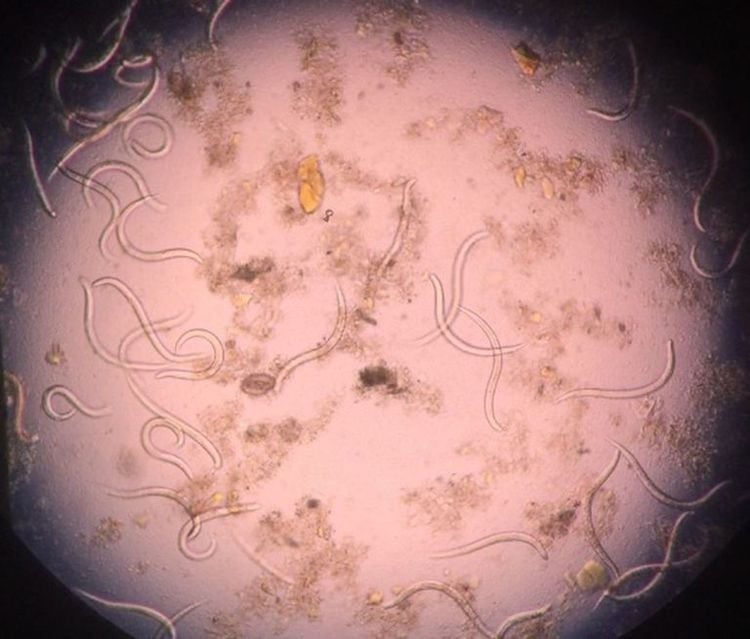
Xét nghiệm Strongyloides IgG sẽ giúp chẩn đoán bệnh giun lươn
5. How to prevent strongyloidiasis
Because the treatment of strongyloidiasis will take a lot of time as well as effort and expense, so prevention is always a top priority. In order to limit infection, re-infection and disease transmission in the community, each person should pay attention to the following issues:
Periodic deworming twice a year, 4 to 6 months apart; Strengthen the body's resistance by working hard to exercise, adding fresh and clean vegetables to the daily menu. These will help the body avoid immunodeficiency, avoiding outbreaks; When working in contact with soil, especially in areas contaminated with human feces, it is necessary to always use protective gear; Raise awareness of yourself as well as those around you in personal hygiene and community cleaning. Strongyloidiasis can cause dangerous complications, especially the risk of death if not detected, diagnosed and treated promptly. Therefore, when the body has symptoms of the disease, the patient should immediately go to a reputable medical facility to examine and perform a Strongyloides IgG test for strongyloidiasis. Early detection of the disease improves the effectiveness of treatment and timely limits the complications that strongyloidiasis causes.
Vinmec International General Hospital is one of the prestigious medical facilities that perform diagnostic tests for parasites. The entire testing process at Vinmec and the examination is carried out by qualified specialists, experienced in diagnosing and treating diseases, so customers can rest assured and trust. thought.
Please dial HOTLINE for more information or register for an appointment HERE. Download MyVinmec app to make appointments faster and to manage your bookings easily.






